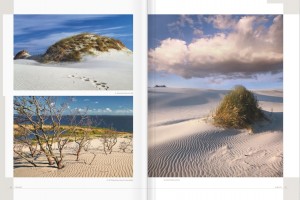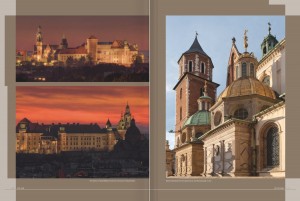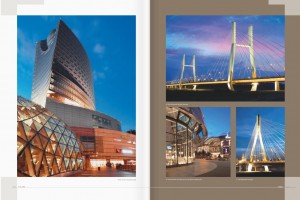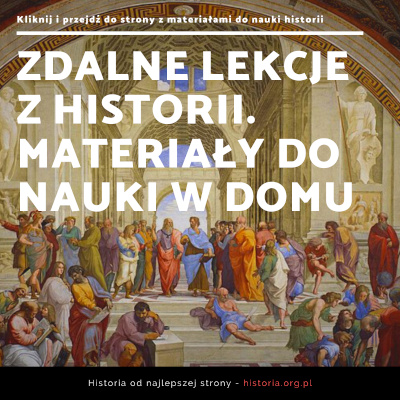„Poland. Always, Yesterday, Today, Tomorrow” – M. Kleiber, H. Samsonowicz, F. Ziejka – the review |
Everyone heard the opinion that if there are more words in a text then a book is instantly considered to be more serious, valuable, better. If there are mostly pictures or drawings, such a publication may be treated with contempt. What if it was an album hardbounded in the most luxurious, both editorial and graphical way, an album which from its definition must have many photos?
Last year a publishing house from Lesko BOSZ has edited and published a very impressive album, Poland. Always, Yesterday, Today, Tomorrow. The main topic of the publication is Poland and the album was printed in two languages: Polish and English.
For many years we have been trying to promote our country everywhere we can and by using tools such as photo albums, in order to make it more striking and interesting. This tendency, which is still strongly ingrained in our culture, is slowly losing its power. Polish people know their value, are aware of the fact of how precious and beautiful the natural landscapes in Poland are, how rich the cultural tradition and history of over one thousand years are. History has treated our nation better or worse and the need to permanently prove who we are and what we signify, is getting dispensable. Luckily, the time had taught us humility and the Poles try to think of past years as a lesson, which can be demonstrated now and here and can be seen then and there- in the future.
The album Poland… is signed as a luxurious edition. There can be no doubt about it, because if we take this huge book with our hand, this luxury is obvious. The publication is hardbounded with the see-through dust-cover, both elements complement each other because they are connected and expose the graphic side of the publication focused on making the Polish national colors, red and white, visible. The album is big in size, but, surprisingly, not as heavy as one may think. With its weight, it reminds of schoolbooks. The reasons are high class materials, very good quality paper, the cover and the way that the pages were lapped.
 The book has exactly 400 pages; four hundred pages of the text and the pictures, which become a symbolic wander through our country, beginning from what we have nearby, our rich flora and fauna. Still, before we look at the impressive photos of our nature, it is worth to read the two introductions, one of them written by the former president of Poland, Lech Wałęsa and the second one by the President of the European Parliament in the years 2009 – 2012, Jerzy Buzek.
The book has exactly 400 pages; four hundred pages of the text and the pictures, which become a symbolic wander through our country, beginning from what we have nearby, our rich flora and fauna. Still, before we look at the impressive photos of our nature, it is worth to read the two introductions, one of them written by the former president of Poland, Lech Wałęsa and the second one by the President of the European Parliament in the years 2009 – 2012, Jerzy Buzek.
The part of the album entitled Nature, is included in the bigger chapter Always and is followed by the excerpt from the Gallus Anonymous’ s Chronicle, which I probably found the most beautiful part of the whole album. Watching incredibly attractive photos, one can almost literally wander through Poland, starting with the baltic beaches, through forests and lakes of Warmia and Masuria, all the way to the peaks of all the cordilleras in the south of the country. It‚s not only my own thought that, once again, Poland has nothing to be ashamed of, that our homeland in terms of flora and fauna, original geographical location in the centre of Europe and specific topography is a place which should be known by everyone who expects such impressions.
 The chapter Yesterday and the subsection entitled Poland Yesterday with the text written by Henryk Samsonowicz, one of the best Polish historian, is a journey through the history of our homeland; it begins with the smaller prints that represent the most meaningful places for Polish history and ends up with back copies of the photographs about the similar subject. All of the photographs are placed on the left side of the text. In the further part of the chapter we are watching the prime photographs of the places, being historical showcase of our country. The photographed places and the objects were put chronologically, beginning with the prehistoric times (the reconstruction of the settlement from the bronze age in Biskupin), through the Middle Ages and the modern times, ending on the representative Polish places, which should be known by every Pole, cherished by and talked about, introduced to foreigners. We will find there the photos of the first Polish capital cities, Gniezno and Cracow. There were immortalized as the most important Polish architectural and the sacral monuments, beautiful tenements in every style and the interiors of the most eminent culture, science, art and politic institutions. This small catalogue of the Polish castles and the mansions, of the most important and best known statues, of old towns, market squares and the city panoramas- was prepared with spirit.
The chapter Yesterday and the subsection entitled Poland Yesterday with the text written by Henryk Samsonowicz, one of the best Polish historian, is a journey through the history of our homeland; it begins with the smaller prints that represent the most meaningful places for Polish history and ends up with back copies of the photographs about the similar subject. All of the photographs are placed on the left side of the text. In the further part of the chapter we are watching the prime photographs of the places, being historical showcase of our country. The photographed places and the objects were put chronologically, beginning with the prehistoric times (the reconstruction of the settlement from the bronze age in Biskupin), through the Middle Ages and the modern times, ending on the representative Polish places, which should be known by every Pole, cherished by and talked about, introduced to foreigners. We will find there the photos of the first Polish capital cities, Gniezno and Cracow. There were immortalized as the most important Polish architectural and the sacral monuments, beautiful tenements in every style and the interiors of the most eminent culture, science, art and politic institutions. This small catalogue of the Polish castles and the mansions, of the most important and best known statues, of old towns, market squares and the city panoramas- was prepared with spirit.
 The next chapter Today and the subsection Poland’s True Wealth, authored by Franciszek Ziejka, Polish scholar and historian of literature, is not only a different reading, but also a different journey. A journey through the cultural output of Poland and Polish people and about the influence it had on the Old Continent and the whole world. It‚s a story about people, of whom our country can be proud of, whom we should speak about when the opportunity arises. The silhouettes of the Poles well known in the country and abroad were presented in a accessible and clear way. There are the Nobel prize winners, scholars, writers, artists, politicians and the representatives of widely understood culture. Analogically, similarly to the first chapters, this one was also enriched, in part, with photos, once again great quality and one more time showing our land as a developing country, having a potential to create ideas, which should be shared with others. This chapter introduces the modern Poland. The photos were collected to show resiliently developing country in the Middle-Eastern Europe, country which is the member of NATO, European Union, functioning politically, diplomatically and culturally in the whole world. Poland distinguishes itself with the specific namebrand, which is recognized practically everywhere - quality.
The next chapter Today and the subsection Poland’s True Wealth, authored by Franciszek Ziejka, Polish scholar and historian of literature, is not only a different reading, but also a different journey. A journey through the cultural output of Poland and Polish people and about the influence it had on the Old Continent and the whole world. It‚s a story about people, of whom our country can be proud of, whom we should speak about when the opportunity arises. The silhouettes of the Poles well known in the country and abroad were presented in a accessible and clear way. There are the Nobel prize winners, scholars, writers, artists, politicians and the representatives of widely understood culture. Analogically, similarly to the first chapters, this one was also enriched, in part, with photos, once again great quality and one more time showing our land as a developing country, having a potential to create ideas, which should be shared with others. This chapter introduces the modern Poland. The photos were collected to show resiliently developing country in the Middle-Eastern Europe, country which is the member of NATO, European Union, functioning politically, diplomatically and culturally in the whole world. Poland distinguishes itself with the specific namebrand, which is recognized practically everywhere - quality.
The chapters Today and Tomorrow by Michał Kleiber, the specialist in mechanics and the computer science, who had measured with the topic about Poland in the future, are connected with the invisible bridge. The future presented in the album, has became the present already since many of the projects got realized as a result of Poland being distinctively outstanding in terms of development and effectuating many improvements, which not so long ago were only the plans for the undefined future! The text was enriched with many photos and projects, which are being realized. Most of them are buildings of the public utility enterprises of the infrastructure domain, transportation, technologies of energy and also the plans to expand cultural and scientific institutions. The chapter, in terms of the visual aspect, is based on many drawings, drafts and computer graphics and its goal is to show Poland in the future.
In this review I have listed the names of the authors of specific while mentioning the photos but I didn‚t list the authors of the photos and, as a reviewer, who relates to everything connected to the publication, I am obligated to mention at least some of the names that figure on the long list in the contents. The authors of the great photographs are among others: Renata and Marek Kosiński, Marcin Nawrocki, Waldemar and Zbigniew Panów, Piotr Skórnicki, Leszek Szurkowski, Mieczysław Wieliczko and Jan Włodarczyk. Without their work this publication would not have made such a stunning, visual impression. By the way, it is necessary to mention the words of accolade to the publishing house from Lesko for sponsoring such a meaningful product. Bravos for the publisher.
To conclude, I have to mention about our national tendency to promote ourselves. As I wrote previously, our tenet to, sorry for the word, „sale” everywhere and speak of Poland as the new country on the international arena, is getting weaker. We don‚t have to tell about it, because we prove this in many areas. An album or any kind of publication is like a tube, which communicates about things done in the past, present and also about that what can be done in the future. Poland. Always, Yesterday, Today, Tomorrow proves itself. It‚s a great showcase, that tells the people living over Seine, Danube, Tiber, Thames or Spree about the land over Vistula .
Pluses and minuses:
On plus:
+ the quality of the edition
+ the editorial and graphical binding
+ the photographs
+ the engravings
+ the footprints and the computer visualizations
+ the texts
On minus:
- one of the maps is scanned with a mirror’s reflection (page 10)
- the price
The title: Poland. Always, Yesterday, Today, Tomorrow
The authors: Michał Kleiber, Henryk Samsonowicz, Franciszek Ziejka
The publisher: BOSZ
The year of edition: 2012
ISBN: 978-83-7576-141-2
The number of the pages: 400
The cover: hard with dust cover
The price: 450 PLN ~ 105 EUR
The reviewer’s mark: 8,5/10
Translated by: Ewa Kunecka
Te artykuły również mogą Cię zainteresować:
Znajdujące się w portalu artykuły nie zawsze prezentują opinie zgodne ze stanowiskiem całej redakcji. Zachęcamy do dyskusji nad treścią przeczytanych artykułów, by to zrobić wystarczy podać swój nick i wysłać komentarz. O naszych artykułach możesz także porozmawiać na naszym forum. Możesz także napisać własny artykuł i wysłać go na adres naszej redakcji.




Ale cena! Typowy album na prezent i to chojny, najlepiej dla obcokrajowca, albo dla kogoś kogo stać. Zdjęcia są oszałamiające, bo pewnie teks to podstawowe informacje, dla Polaka oczywiste, dla obcokrajowca pewnie ciekawe 🙂
No, cena... Żeby jeszcze tak zarobki przeliczali 😛